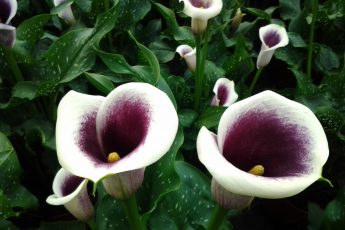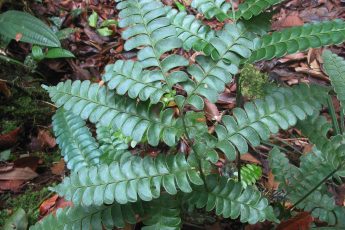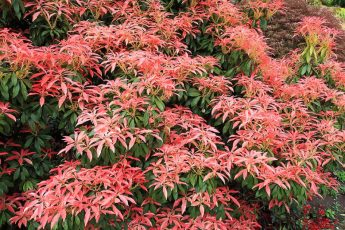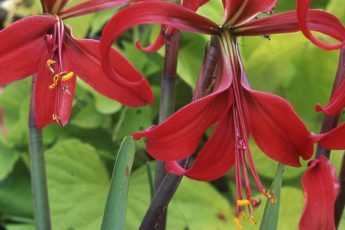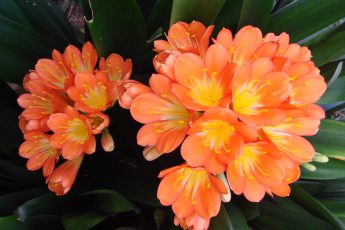The Tacca plant, often referred to as the “Bat Plant” due to its striking, bat-shaped dark bracts, is a true marvel in the world of botany. Originating from the lush landscapes of India and Malaysia, this perennial climbing vine from the Dioscoriaceae family is a captivating centerpiece for any plant enthusiast’s collection. However, growing Tacca is not for the faint-hearted; it demands dedicated care and expertise.
Understanding the Tacca’s Natural Habitat
Tacca thrives in its native environment, which offers high humidity and diffused light, conditions that must be mimicked to cultivate it successfully indoors. In its natural habitat, this plant benefits from the partial shade of towering trees, absorbing filtered sunlight and basking in consistently warm temperatures. To replicate these conditions, place the Tacca in a bright room, ideally near a window facing west or east, to provide bright but diffused light while protecting it from the harsh midday sun.
Optimal Growing Conditions
The Tacca’s growth is vigorous, with its shoots potentially reaching up to 60 cm in length indoors. The key to a thriving Tacca plant is maintaining a careful balance of warmth and moisture. Temperature is crucial; the Tacca prefers a warm climate, with summer temperatures ranging from 71.6°F to 77°F and no lower than 64.4°F in winter. High humidity, between 60-90%, is essential, though care must be taken to prevent leaf damage from misting. Instead, consider placing the plant on a tray of wet claydite or using other methods to increase humidity without direct contact.
Soil and Watering Requirements
Tacca requires a light, breathable, and slightly acidic soil with a pH of 4.5-6.5. A well-draining mix of one part sod land, one part leaf land, two parts coarse sand or perlite, and one part moist peat or humus is ideal. Watering this exotic plant necessitates attention; during summer, provide abundant warm, soft water, allowing the top layer to dry between waterings. Water should be drained from the tray to prevent waterlogging. In autumn, as growth slows, reduce watering to once every three weeks, maintaining more care if the plant appears to enter dormancy.
Fertilization Strategy
From spring through autumn, feed the Tacca every 2-3 weeks with a liquid fertilizer. This nutritional boost supports its continuous flowering and vigorous growth. During the cooler months, from September to March, reduce feeding to monthly intervals to align with its slower metabolic pace.
Propagation Techniques
Propagating Tacca can be achieved via offsets, often termed “children,” which develop near the base of the plant. Once these offsets have 4-5 leaves, they can be separated and replanted after dusting the cuts with charcoal to prevent desiccation. Seed propagation is another option, but it requires fresh seeds due to rapid viability loss. Seeds are sown in March-April into a slightly acidic mix of wet soil and sand, under a covering of plastic to maintain humidity and at a temperature of 82.4°F. Ensure they receive enough light, even employing artificial luminescence if necessary.
Transplanting and Ongoing Care
Transplant the Tacca in early spring every 2-3 years, choosing a pot that is slightly larger than its current home, but not excessively large. A wide, shallow pot is preferable. During transplantation, it may be beneficial to trim some foliage to reduce stress on the roots. Ceramic pots can provide stability for larger specimens. Despite their need for space to grow, Taccas should never be moved outdoors where drafts are common. Instead, simulate natural conditions by ensuring good air circulation indoors.
Challenges in Tacca Cultivation
Tacca is relatively resilient against pests but can occasionally attract red spider mites. Keeping humidity high can help mitigate infestations. In dry conditions, leaf tips may turn brown and brittle. Conversely, excessive watering can lead to leaf tips darkening while remaining soft, potentially leading to root rot. Regular monitoring and adjusting care practices can ensure these issues are promptly addressed.
Growing a Tacca plant is a rewarding challenge that offers stunning visual appeal as a payoff. With careful attention to its specific needs, this exotic beauty can flourish and become the crown jewel of your indoor garden. Enjoy the process of mastering its cultivation, knowing that each bloom is a testament to your dedication and skill.


